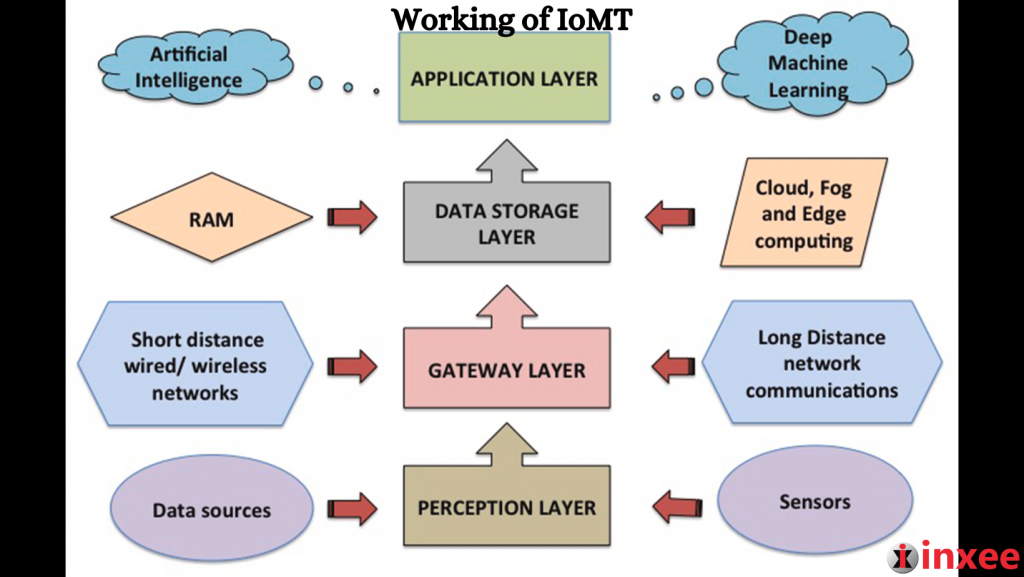Working of IoMT

The working of an Internet of Medical Things (IoMT) system involves several interconnected components that work together to enable remote monitoring, data collection, and healthcare management. Here’s an overview of the working of an IoMT system:
Device Integration: The IoMT system integrates various medical devices and sensors such as wearable health trackers, blood pressure monitors, glucose meters, and other monitoring devices. These devices are equipped with sensors to collect real-time health data from patients.
Data Collection and Transmission: The connected medical devices continuously collect health data from patients, including vital signs, activity levels, medication adherence, and other relevant metrics. This data is then transmitted securely to a central data storage or cloud platform using wireless communication technologies like Wi-Fi, Bluetooth, or cellular networks.
Data Storage and Processing: The collected health data is stored securely in a central data storage or cloud platform. This platform provides scalable and reliable storage, ensuring the data is easily accessible and protected. Data processing techniques such as data analytics, machine learning, and artificial intelligence algorithms are applied to extract meaningful insights and identify patterns from the collected data.
Remote Monitoring and Alerts: Healthcare providers and caregivers can remotely monitor the health status of patients through dedicated applications or web portals. They can access real-time health data, track patient progress, and receive alerts or notifications in case of any abnormalities or emergencies. This enables timely intervention and proactive healthcare management.
Data Analysis and Decision Support: The collected health data is analyzed using advanced analytics techniques to derive valuable insights. Machine learning algorithms can identify trends, predict health risks, and provide decision support to healthcare providers. These insights aid in personalized patient care, treatment planning, and preventive measures.
Patient Engagement and Communication: IoMT systems often include patient-facing interfaces such as mobile apps or web portals. These interfaces enable patients to access their health data, track their progress, set goals, and communicate with healthcare providers. Patients can receive personalized recommendations, reminders for medication, or lifestyle changes to improve their health.
Security and Privacy: IoMT systems prioritize the security and privacy of patient data. Robust security measures such as encryption, authentication, and access control are implemented to ensure the confidentiality and integrity of patient information. Compliance with data protection regulations and standards is followed to safeguard patient privacy.
By leveraging the capabilities of IoMT systems, healthcare providers can remotely monitor patients, deliver personalized care, improve treatment outcomes, and enhance the overall healthcare experience. It enables more efficient and effective healthcare delivery, especially in remote or underserved areas, while empowering patients to actively participate in their own healthcare management.









Leave a Reply